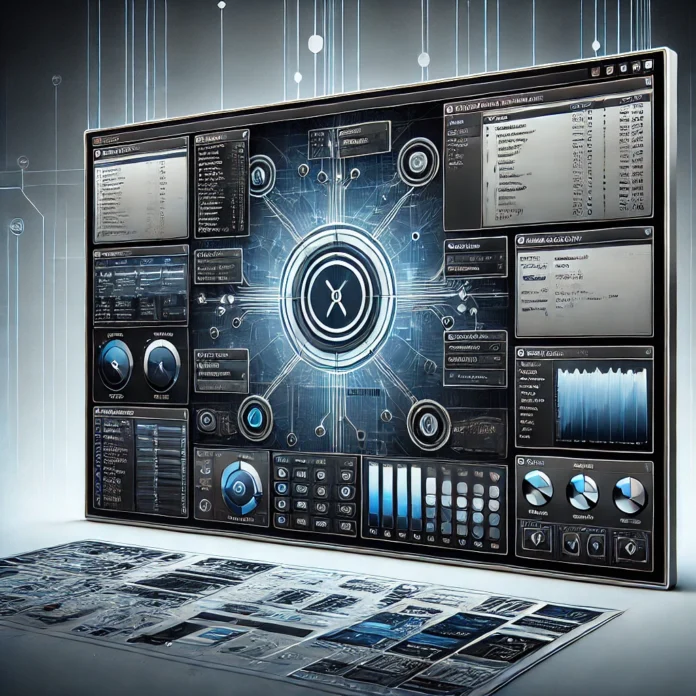QNX, a real-time operating system (RTOS) renowned for its reliability and security, plays a crucial role in the defense sector. Originally developed in the 1980s and now owned by BlackBerry Limited, QNX is a Unix-like microkernel operating system designed for embedded systems, which require precise timing and fault tolerance. These qualities make it an ideal choice for mission-critical defense applications, where any system failure can have severe consequences.
Key Features of QNX in Defense
- Real-Time Performance: QNX’s real-time capabilities ensure that defense systems can handle operations with stringent timing requirements. Its deterministic nature allows it to deliver consistent and predictable performance, a critical need in military environments where timing accuracy can be the difference between success and failure.
- Modular Microkernel Architecture: Unlike traditional monolithic operating systems, QNX uses a microkernel architecture. This design means that most system services, such as file systems, networking, and device drivers, run as user-space processes. If one service fails, the entire system doesn’t crash. This modularity enhances system stability and allows for easy updates or replacement of individual components without disrupting the entire system.
- Security and Safety Certifications: QNX provides robust security features, including secure boot, encryption (e.g., AES-256), and memory protection. Additionally, it supports high-level security standards like Trusted Platform Module (TPM) and Arm TrustZone. For defense applications, where security is paramount, these features help safeguard sensitive data and ensure system integrity.
Use Cases in Defense
- Command and Control Systems: QNX is deployed in command and control (C2) systems that require real-time processing, reliability, and secure communication. These systems often integrate various sensors, communications channels, and data processing units. QNX ensures that data is processed in real-time, enabling military personnel to make timely and informed decisions.
- Avionics and Flight Systems: In military aviation, QNX is used in avionics systems, which control everything from flight management to communications and navigation. The RTOS ensures that these systems operate with the precision and reliability required in the air. QNX’s ability to achieve safety certifications such as DO-178C (for airborne systems) makes it a trusted choice for military aircraft and drones.
- Unmanned Aerial Vehicles (UAVs): UAVs play an increasingly important role in modern warfare, from reconnaissance missions to direct engagements. QNX powers many of these UAVs due to its ability to handle real-time operations, modular software design, and high availability. The RTOS enables these drones to perform complex tasks autonomously, such as navigating through hostile environments or collecting data from various sensors.
- Cybersecurity and Secure Communication: Defense systems must ensure secure communication and protect against cyber threats. QNX’s layered security approach, which includes encryption, secure logging, and privilege separation, makes it a reliable foundation for systems handling classified data. It can be used in secure communication devices, encryption systems, and other cybersecurity tools to protect sensitive military information.
- Weapon Systems: QNX is used in the control systems of various advanced weaponry. The real-time performance ensures that weapons operate with the required precision and timing. Whether in missile systems, targeting systems, or automated defense mechanisms, QNX helps ensure reliable and timely operations.
Software and Tools Built on QNX in Defense
- QNX OS for Safety: This version of QNX is pre-certified for safety standards such as ISO 26262 and IEC 61508, making it suitable for defense applications that require rigorous safety certifications. It is used in environments where both reliability and compliance with strict regulatory standards are necessary.
- QNX Hypervisor: In defense, where multiple systems often need to be consolidated onto a single platform for efficiency, the QNX Hypervisor enables the secure and isolated operation of multiple operating systems on a single piece of hardware. This is particularly useful in scenarios where different subsystems with varying security requirements need to operate simultaneously, such as in military vehicles or aircraft.
- Middleware Solutions: QNX provides middleware that enhances the development of defense applications. These include sensor frameworks for real-time data processing and acoustic management systems for communication devices in noisy environments. Middleware helps streamline development efforts, allowing defense contractors to focus on the specific functionality of their systems.
- Autonomous Vehicle Systems: As autonomous military vehicles become more prevalent, QNX is being used to manage their operations. This includes not only navigation and control but also integrating various sensors and communication systems to ensure that these vehicles can operate independently in the field.
Conclusion
QNX’s combination of real-time performance, security, and modularity makes it an essential component in modern defense systems. From avionics to command and control systems, QNX ensures that critical military operations are carried out with precision and reliability. Its ability to meet strict safety certifications and provide robust security features further solidifies its role as a trusted platform in the defense industry. As military technology continues to evolve, QNX is likely to remain at the forefront, powering the next generation of defense innovations.
By integrating QNX into defense systems, developers can ensure that their applications are not only functional but also secure and reliable, even in the most demanding environments(BlackBerry QNX, Techopedia, BlackBerry QNX).




